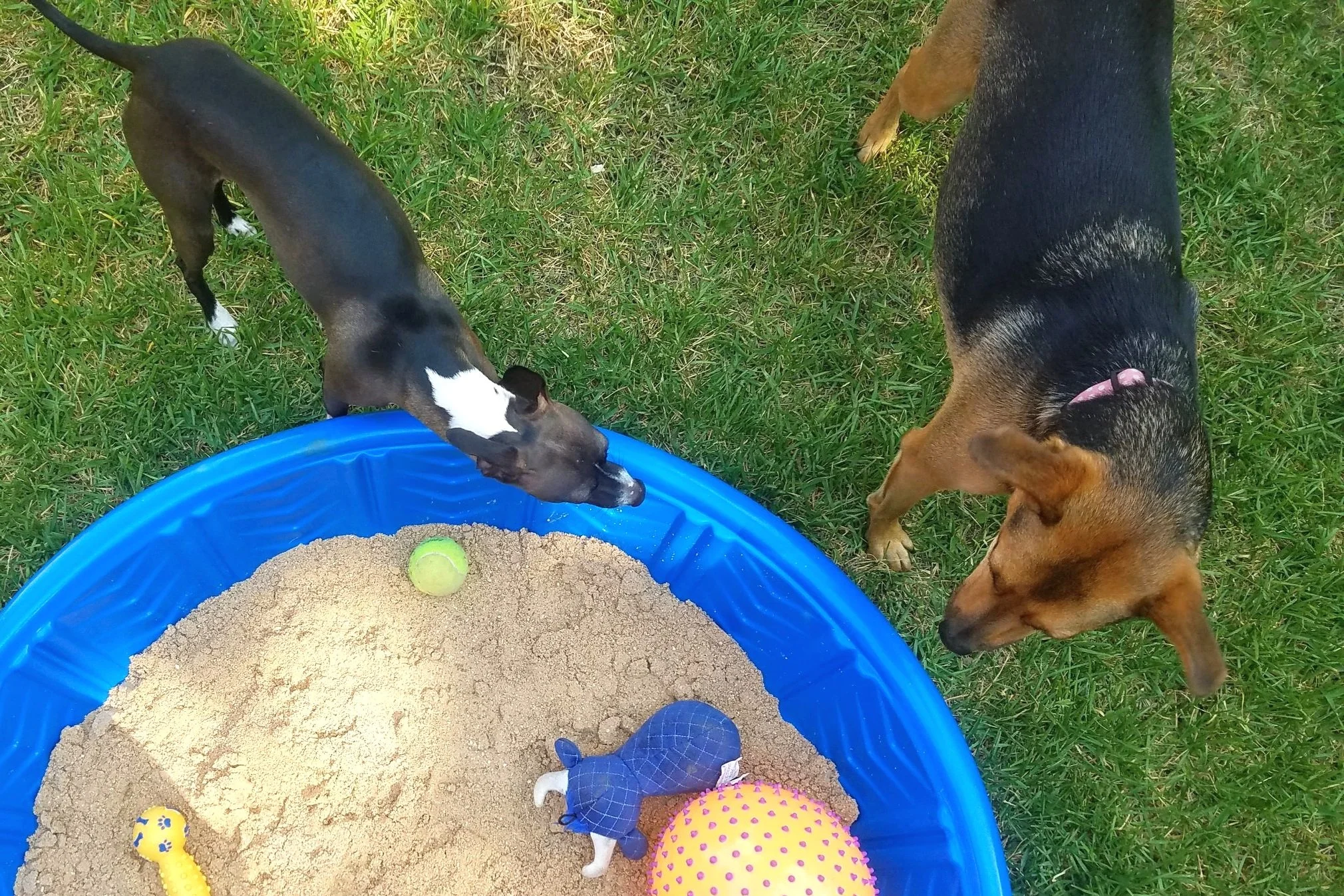4 Steps to Stop Digging
Digging is normal and fun for the dog. Freshly dug holes can hide bones, unearth small critters or be used as a lounge spot on a hot summer day. Although these may be fun hobbies, dogs will also dig if they spend too much time alone in the yard.
Digging isn’t considered a problem because it’s fun for the dog but destructive behaviors can be frustrating and costly. To address a digging problem completely, determine which one or more of the following factors may be contributing to your dog’s digging.
Stress - too much time alone, sudden changes around the home or the absence of a dog friend can lead to displacement behaviors like digging and chewing. Physical activity releases stress but for some, this is a sign of separation anxiety. Talk to your vet and contact a trainer or separation anxiety certified trainer if you believe your dog’s digging is stress or separation related.
Playfulness - dirt plays back! It kicks up and feels good between the toes which can be particularly enticing for puppies and adolescent dogs. The more boisterous your furry bundle, the better your supervision should be when they’re outside so you can quickly interrupt and redirect any unwanted digging.
Boredom - a bored dog will find their own entertainment. Ensure your dog is getting 30 minutes of aerobic exercise, mental stimulation and social interaction, daily. Hire a dog walker or sign them up for doggy daycare during the week to prevent boredom. Avoid confining your dog to the backyard alone for long periods of time.
Habit - reinforced behavior will be repeated. If your dog is not well managed and repeatedly allowed to practice digging in unwanted spots during the first 2 years of their life, digging will persist into adulthood unless a plan is put in place.
Once you’ve determined why your dog is digging, identify the times they are most likely to dig and come up with a plan for who will supervise the dog when they’re outside, how they will be redirected (is your dog’s name response strong enough to call off digging? could you improve their recall to make it easier to interrupt? Will gently coaxing them away be enough?) and what they will be redirected to do instead. Then stick to the plan until your dog is reliably digging in their approved dig spot.
Where to begin:
Enzo & Ellie checking out the “test pit” - a sand filled kiddie pool.
Stop unwanted landscaping. Prevention is best and easiest. Block your dog's access to the area you do not want them to dig and don’t expect them to resist temptation on their own. Introduce them to where you want them to dig from the first day.
Supervise, supervise, supervise. Until your dog has taken to their new digging spot, do not leave the dog outside alone. It will be too easy for them to make mistakes. Confine them inside when you need to leave your dog alone and provide plenty of chew toys to prevent boredom.
Create a digging spot. You can make a dig pit using a sandbox or kiddie pool, or designate a 3-by-6 foot area in your yard as a safe dig spot. Loosen about 2 feet of earth, add a little sand for drainage and clear any debris. Then, make it interesting!
Let your dog see you “hide” a toy or stuffed kong in the pit. Encourage them to find the hidden treasure and lavish your dog with praise when they do.
Gradually cover the treasures with more dirt and keep showering your dog with praise for getting it right.
Occasionally, spice up the treasure by adding something new to keep your dog interested and digging where you want.
Redirect mistakes. If your dog goes back to the old spot, gently interrupt by calling their name or recalling them to you, then redirect them back to their dig pit.
Notes about dig pits
Pick a shady spot for the dig pit. If your dig pit is filled with sand, moist sand is more fun to dig in than dry, plus, summer sand can get very hot! So, add a bit of water to make the sand more enticing to dig in and to cool the temperature in the hot summer months. Cover the pit at night to prevent neighborhood cats from using it as a litter box.
What about dirty dog feet?
When I moved to Dallas, one of my very first client’s gave me a Mudbuster. What a useful tool this has been! With all of the doggy foot traffic around my home, it has really come in handy. Not to mention, if your dog has yeasty feet, this product makes cleaning and treating their paws even easier.
For muddy paws, fill the Mudbuster halfway with water and dunk each of your dog’s feet in it. Then just dry. Now, floor upkeep takes less time on rainy days and wiping a wet paw dry is easier than wiping a muddy foot clean.

